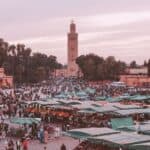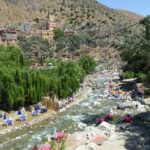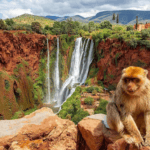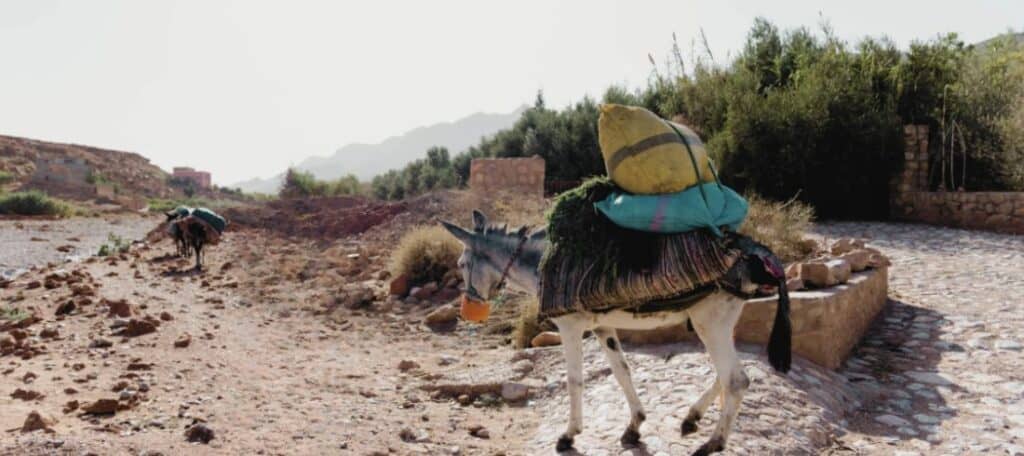
For centuries, the desert nomads have carried timeless stories across the sands. Each dune quietly shares tales of survival and adaptation in harsh conditions. These lands, where Bedouin tribes have flourished, know no fences. Here, their animals roam free under the intense sun. This lifestyle showcases a deep connection between people, animals, and the vast Arabian Desert. As the modern world reaches these ancient communities, we must remember and value their nomadic traditions. These practices date back to the early Pleistocene, around 2.6 million years ago1. Join us as we delve into the world of nomads, exploring their close ties to the earth. These stories unfold beyond modern constraints, revealing a rich cultural tapestry.
The tracks of history merge with today’s pathways, presenting a challenge for the desert’s guardians. The discovery of vast oil fields and the rise of urban structures mark a significant transition. The Bedouin lifestyle is evolving, influenced by global economic trends and political changes. These shifts illustrate not just survival in the desert but a complex story of adapting to a changing world.
Understanding Desert Nomads and Their Symbiotic Relationship with Nature
Desert nomads live in vast deserts, facing the hot sun every day. Their lives show how humans can adapt to harsh deserts. They respect and learn from the desert’s tough conditions.

The Desert as a Teacher: Adapting Instead of Conquering
The desert is a hard but beautiful place that teaches its people to be smart and resourceful. Desert nomads like the Bedouins build a life together with nature for survival. They have learned how to live with the desert’s extreme climate.
The Bedouin Lifestyle: Harmony with the Harsh Environment
The Bedouin way of life fits perfectly with nature’s forces. They have learned to be strong and resourceful. Their knowledge lets them find and use hidden water in dry lands. This shows living with nature can support a lasting lifestyle.
Respecting the Forces of Nature: Lessons from Sand and Wind
Desert nomads respect nature’s power, like the endless sand and wind. They move and make choices wisely to avoid using too much water. They look into using wind and solar power to keep nature’s balance.
| Element | Challenge | Bedouin Adaptation |
|---|---|---|
| Water | Limited Surface Water | Exploitation of Underground Reserves |
| Travel | Inadequate Maps, Navigational Difficulties | Camel Caravans, Modern Motor Trucks |
| Resource Management | Costly Agriculture and Industry | Renewable Energy Initiatives |
| Climate | Extreme Temperatures and Sandstorms | Mobile Tents, Seasonal Migration |
Nomadic Cultures Across Deserts: The Sahara Nomads and American Desert Wanderers
Nomads travel across deserts from the Sahara to America, showing unique adaptability. The Sahara nomads rely on camels, unlike American wanderers who use tech. This difference shows how nomadic cultures can be both diverse and similar.
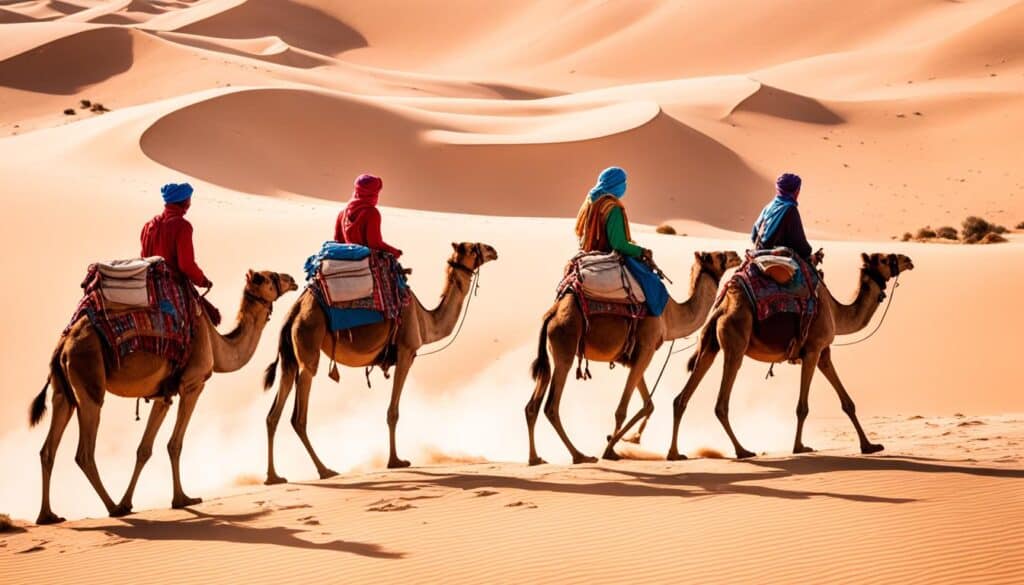
Comparative Insights from Sahara Nomads to Nomads in American Deserts
In the Near East, mostly in towns, nomads occupy large lands. Groups there live with animals, like camels, for travel. In the U.S., desert nomads seek freedom and adventure in different ways.
Bedouins in the Sahara now use cars, not camels. American nomads also embrace tech, using RVs in deserts like Mojave or Sonora.
Journey of the Modern Desert Nomads: From Settled Life to Wandering Spirits
Today’s nomads mix old and new ways. Despite changes, Sahara nomads and others keep moving like their ancestors. This tradition is shared with American desert lovers, bonding with nature freely.
Moving from a settled life to wandering brings big cultural changes. Though hard to track, nomadic numbers show a shifting community. Yet, nomadism thrives, seen in sustainable herding practices across various lands.
The clash between old nomadic ways and modern life reshapes nomad identities. Despite changes, their spirit remains, highlighting the importance of understanding modern nomads.
The Nomads of the Desert: Ancient Traditions and Modern Journeys
Desert nomads are part of Earth’s diverse cultures. They have ancient traditions that show the strength of nomadic tribes. Their modern journeys also reveal their ability to adapt in a changing world. Today, about 40 million nomads keep their traditional nomadic lifestyle alive. This is despite the global population nearing eight billion.
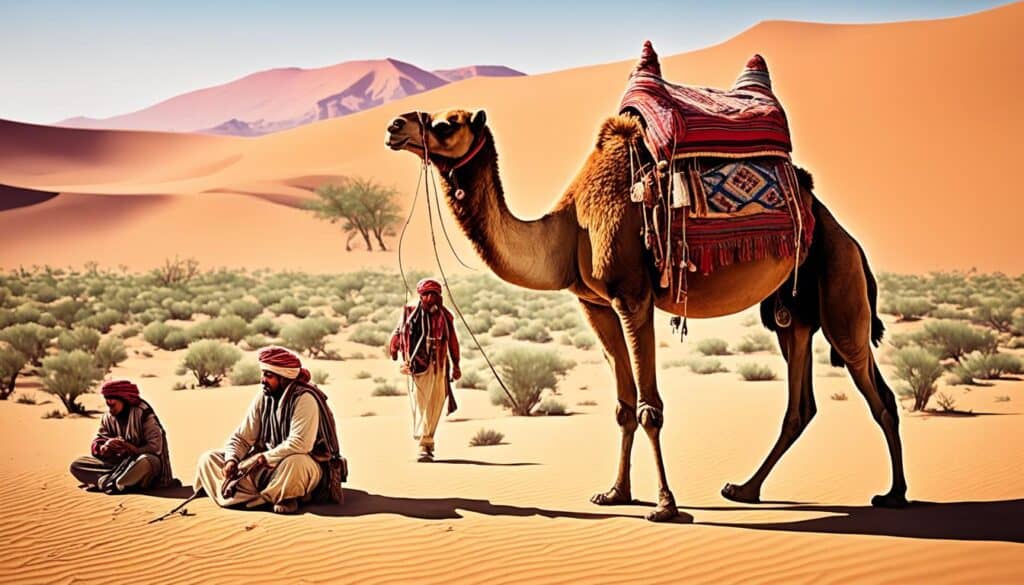
The Legacy of Nomadic Tribes and Their Evolving Traditions
In the desert, Bedouin women represent freedom. They face fewer restrictions and brilliantly adapt to their harsh surroundings. In the Arctic’s cold, Russia’s Nenets deal with climate change. They move into new areas as melting snow and fires change their land.
Contemporary Desert Nomads: Adapting Traditions in a Modern Context
The Tuareg nomads move through deserts in several countries. They update their lifestyle with the times and environmental changes. Known as the “Blue Men” for the dye on their skin, this feature defines their identity along with their adaptable nature. Once, the Tuareg ran large caravans with up to 20,000 camels. They carried salt to Timbuktu, showcasing their evolving traditions.
Today’s desert nomads face changes in politics and environment. For the Tuareg, these include suppressed rebellions and drought impacting camel herds. This dramatically affects their traditional way of life.
The exhibition “Art of Being Tuareg: Sahara Nomads in a Modern World” brings history to life. Curated by Kristyne Loughran and Thomas K. Seligman, it’s shown at the National Museum of African Art. It offers a window into nomadic life with 200 objects, videos, and music. It’s open daily from 10 a.m. to 5:30 p.m., free for everyone.
| Nomadic Tribe | Regions Inhabited | Challenges Faced | Adaptations |
|---|---|---|---|
| Bedouin | Saudi Arabia | Urbanization | Women’s mobility in desert driving |
| Nenets | Arctic Circle (Russia) | Climate Change | Relocating due to altered pastures |
| Tuareg | Algeria, Libya, Burkina Faso, Mali, Niger | Political unrest, Drought | Reduced caravans, Cultural exhibitions |
Conclusion
The spirit of desert nomads, with their toughness and cleverness, remains alive in their dry homes. The number of Bedouins in Jordan has dropped from around 200,000 in the 1950s to less than 50,000 today. In Saudi Arabia, their numbers fell from 1.9 million in 1974 to about 500,000. This shows how their culture is shrinking7. We can’t overlook the impact of modern life. Cities grow, and old ways fade, leaving very few traditional Bedouins in the United Arab Emirates.
In Baluchistan, Pakistan, nomads are key to the area’s social and economic life. They manage 90% of Makran but are less than 10% of the population, not counting the capital. The decreasing numbers of Baluch nomads and Bedouins show a culture at risk. It threatens the loss of important values like honor and independence.
This isn’t just about numbers. It’s a call to see the worth of different cultures and how nomads have shaped the world. Urban growth, droughts, and the oil economy are pushing against nomadic life. Yet, learning from their harmony with nature, traditions, and adaptation is key to our shared past and future.





